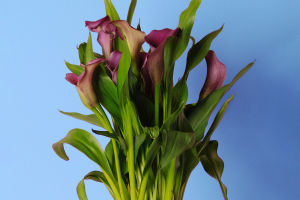The lily of the valley is a plant in the lily family that produces a series of small, bell-like white flowers in late April and early May, emitting a light fragrance.
The lily of the valley is a dwarf plant, glabrous throughout, with a multi-branched, prostrate, spreading rhizome underground. It has a shiny appearance with sheath-like clasping leaves and several membranous scales at the base.
The leaves are elliptic or ovate-lanceolate, and the flowers are campanulate, pendulous, and arranged in racemes. The bracts are lanceolate and membranous, and the style is shorter than the perianth. In autumn, it bears round, dark red berries that are sweet-smelling and poisonous, containing oval, flattened seeds. The flowering and fruiting period is from May to July.
Most of the legends about the birth of the lily of the valley are sad and bleak, and the happiness of the lily of the valley often comes with additional difficulty, accompanied by a vague fatalistic sorrow. The waiting of the lily of the valley is like a sigh in the wind, blank and quiet, only sensed by the heart.
The temperament of the lily of the valley is as pure and transparent as the steadfast and gentle love and faith of a woman in the wind, only to be experienced by those who gaze upon it.
The flower language of the lily of the valley is "return to happiness" and "guard happiness." In different countries, people have different beautiful visions of the lily of the valley. In China, plants related to "orchids" are always associated with gentlemen.
Britain, being a gentleman's country, also cherishes the elegant names "Lily of the Valley" and "Lady's Tear" for bell orchids. It is well known that the French people are romantic, so naturally this innocent and rosy flower of the lily of the valley is also loved by the people in the romantic city.
The lily of the valley prefers to grow in a semi-shaded, moist, well-ventilated environment with good coolness and avoidance of hot and dry conditions. It is hardy and requires humus-rich loam and sandy loam soil. It thrives in moist air, well-drained soil, and a shaded ecological environment.
A care tip: bell orchids and lilacs should not be placed together, as the lilacs will wilt quickly. Even if they are placed 20 cm apart, it will affect the growth of the lilacs. Removing the bell orchids will allow the lilacs to recover.
The lily of the valley has creamy white flowers that hang like a string of bells, emitting a fragrance. Its mature berries resemble jewels, round and red. The leaves are sturdy and silky, making it an excellent plant for flowers, fruits, and foliage. It can be used in forests, forest edges, as indoor potted plants, and for picking leaves for vases, flower baskets, and bouquets.
Additionally, when embellishing or creating mosaic lawns, the presence of lilies in the valley adds distinctiveness and intensifies the garden atmosphere. However, caution should be exercised as the entire plant of the lily of the valley is poisonous, with a sweet smell.
It is important to avoid letting the sap come into contact with wounds or eyes. The lily of the valley not only has a strong ability to purify the air but also inhibits the growth and reproduction of tuberculosis, pneumococcus, and staphylococcus.
There are many varieties of lily in the valley, including the common white-flowered variety, as well as variants such as the large-flowered lily of the valley and the red-flowered lily of the valley.
In particular, the large-flowered lily of the valley features a pair of dark green, long oval leaves with curved and elegant stalks. It blooms with pure white flowers in April. Apart from single petals, there are also varieties with heavy petals, known as heavy petal lily of the valley. Additionally, there are horticultural hybrids with spotted leaves, referred to as spotted-leaf lily of the valley.
May this white lily of the valley bring beauty to the world, along with good blessings. May the cultural legend of the lily of the valley enter people's souls and beautify their hearts.


